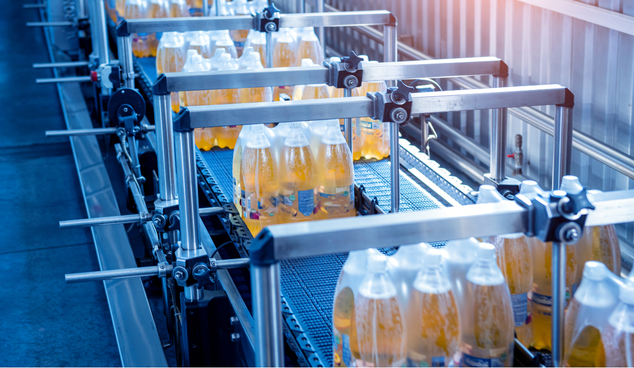PROBLEM
Ishwar Dhere, Process Engineer with Stantec Resourcenet India was tasked with analyzing estimated pump head, normal operating line velocities, and pressure analysis for a new canola oil processing system.
The system consists of multiple pumps, atmospheric tanks, vacuum tanks, hydrodynamic reactors, heat exchangers, centrifugal separators, bleaching and basket filters, strainers, mixers, and control valves
solution
With the initial analysis in Fathom completed, it was evident that velocities and pressure drops across the pipes in several areas, particularly in the separator subsystems, exceeded design criteria for the centrifuges. These pipes were changed from 3-inch pipes to 4-inch pipes in a revised design.
Using larger pipes in this area (Figure 1) reduced flow velocities from 2.8 m/s (9.2 ft/s) to 1.6 m/s (5.2 ft/s) (Figure
2). The revised design was modeled, and head rise requirements from these results were used to identify appropriate pumps for the final system. The final design refines approximately 100 m3 (26,000 gallons) of canola oil per hour.
Analysis
The entire proposed system was modeled inside of AFT Fathom in steady state as ten subsystems to determine how the system
would operate and identify problem areas. A Navisworks 3D model of the proposed canola oil system was used as a
reference for inputting pipe lengths and fittings in Fathom, with all pipes specified as ANSI Schedule 40 Stainless Steel.
Flowrates for nine pumps were determined by process engineers and modeled as positive displacement pumps to
calculate head rise requirements. To represent a worst-case scenario for the pumps, supply tanks were modeled at their
minimum pressure or liquid level and discharge tanks were modeled at maximum pressure or liquid level except for the
tank for the fully refined canola oil, which was assumed to be 80 percent full.
Pressure drops for heat exchangers, centrifuges, and mixers were assumed, and pressure drops for flow meters, bleaching
filters, basket filters, and strainers were specified using external estimates. The hydrodynamic reactors are sensitive to cavitation and thus the pressure at the reactor subsystem discharge was required to be 400 kPa (58 psia).








